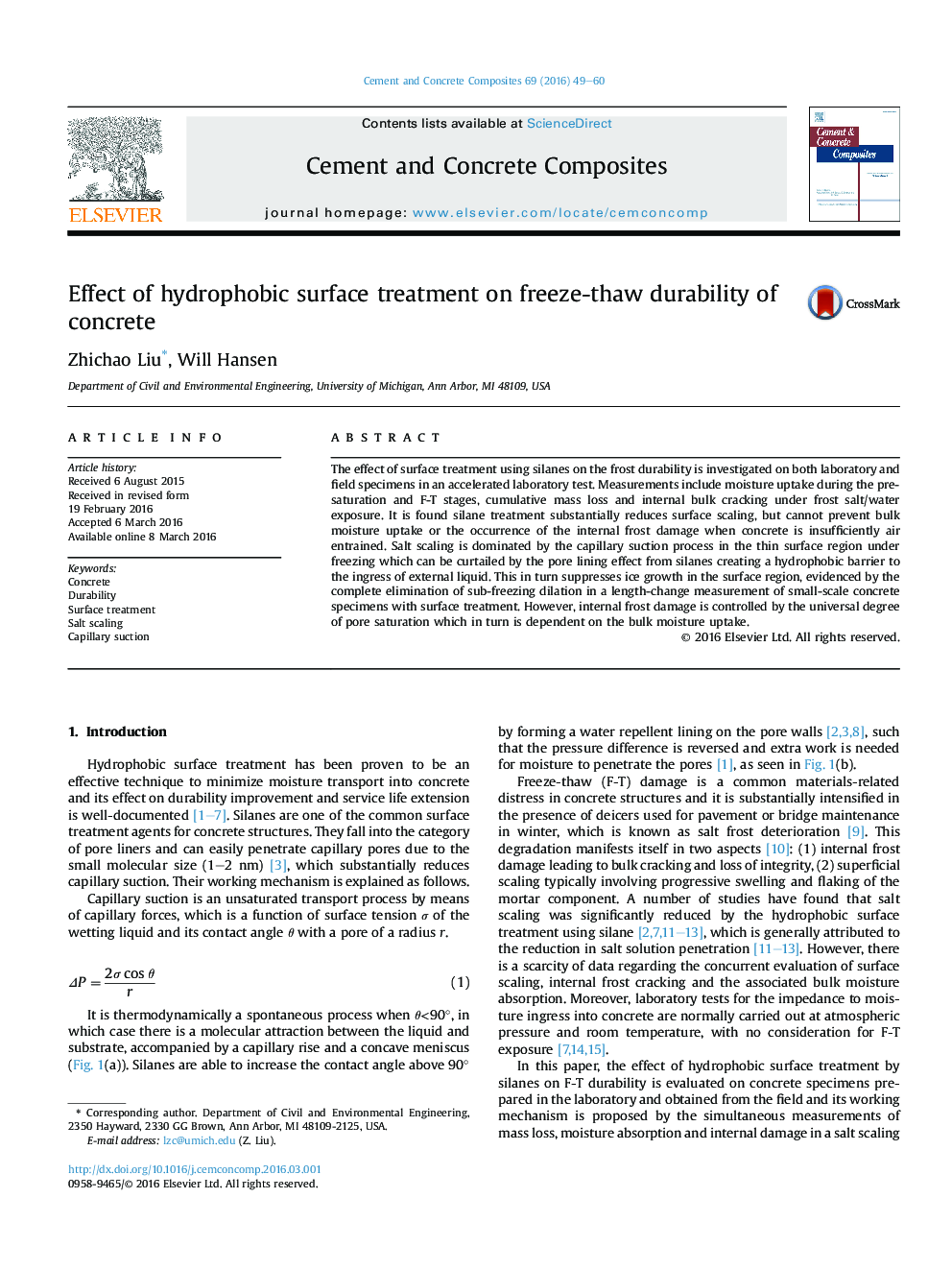| Article ID | Journal | Published Year | Pages | File Type |
|---|---|---|---|---|
| 1454369 | Cement and Concrete Composites | 2016 | 12 Pages |
The effect of surface treatment using silanes on the frost durability is investigated on both laboratory and field specimens in an accelerated laboratory test. Measurements include moisture uptake during the pre-saturation and F-T stages, cumulative mass loss and internal bulk cracking under frost salt/water exposure. It is found silane treatment substantially reduces surface scaling, but cannot prevent bulk moisture uptake or the occurrence of the internal frost damage when concrete is insufficiently air entrained. Salt scaling is dominated by the capillary suction process in the thin surface region under freezing which can be curtailed by the pore lining effect from silanes creating a hydrophobic barrier to the ingress of external liquid. This in turn suppresses ice growth in the surface region, evidenced by the complete elimination of sub-freezing dilation in a length-change measurement of small-scale concrete specimens with surface treatment. However, internal frost damage is controlled by the universal degree of pore saturation which in turn is dependent on the bulk moisture uptake.
